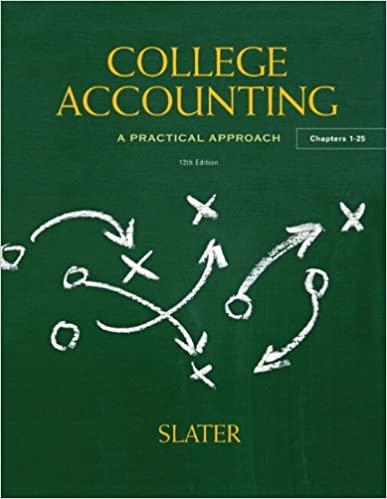Perfecto! Stan shouted up to his friends Javier and Miguel. The two men had just launched their
Question:
“Perfecto!” Stan shouted up to his friends Javier and Miguel. The two men had just launched their own handyman service, and Stan had given them their first job:
installing his new Subway “face” sign—the sign with the Subway logo that goes on the front of the restaurant.
Six months ago, Subway had notified all franchisees that they would be required to install signs with the new logo.
“To tell you the truth, Stan,” said Rashid, “I can’t see that there’s much difference between the old sign and the new one.”
“Well, it’s a rather subtle change—the Subway lettering is closer together, less curvy, and slants to the right rather than sitting straight up and down,” said Stan.
“But there’s nothing subtle about the cost,” he laughed. “Five grand!”
“Whew.” Rashid’s jaw dropped. “All that for a new slant?”
“As it happens,” said Stan, “Subway did mounds of marketing research and found that customers perceive the slanting letters to mean speedier service. Anyway, now that there’s a new logo, any stores that have the old one immediately look out of date.”
The $5,000, Stan mused later, was nothing compared to what he would have to spend to remodel his entire restaurant in the next year or two. Subway Restaurants had recently announced the first complete interior and exterior revamp in the company’s history. Called “Tuscany Décor,” the new design included earth tones, wood fi nishing, brass rails, tiled flooring, and brick textured walls. Stan was impressed when it was unveiled at the last franchisee convention; not only would the new décor be a better match for the chain’s commitment to healthy, fresh food, but it would also attract the more upscale customers moving into the area. Still, how to pay for it?
Stan was in a position not uncommon for businesses of all sizes: the need to spend money to make more money. After spending $3,000 on his new bake oven, Stan didn’t have the capital to spend $5,000 on a new sign—not to mention the thousands that he would have to spend to redo the interior with the new Tuscany décor. He checked the interest rates at his bank and calculated what it would cost him to repay a note with a principal of $5,000, an interest rate of 9%, and a time of 120 days.
![]()
“150 bucks,” thought Stan. “That’s steep. I wonder if I could do better at another bank?” Stan then checked with Country Bank. It offered him $5,000, an interest rate of 8¾%, and a time of 90 days.
![]()
“Just a little over $100 is more like it,” thought Stan, “but how can I pay it back in only three months? That really puts the pressure on. Is it worth the $41 difference to pay back the loan so fast? It’s 30 days less or $41 less. In either case I can deduct the interest from my taxes as a business expense. But, what about when I take out a loan for the remodel? The difference will be in hundreds of dollars.
Hmmm. Time to call Lila!”
Discussion Questions
1. Which loan would you take if you were in Stan’s place? Why?
2. Assume Stan wanted the loan on October 1. What is the maturity date for the 90-day loan? The 120-day loan?
3. Why do some loans use 360 days and other loans 365? Which would be better for Stan?
Step by Step Answer:

College Accounting A Practical Approach Chapters 1-25
ISBN: 9780132772068
12th Edition
Authors: Jeffrey Slater





